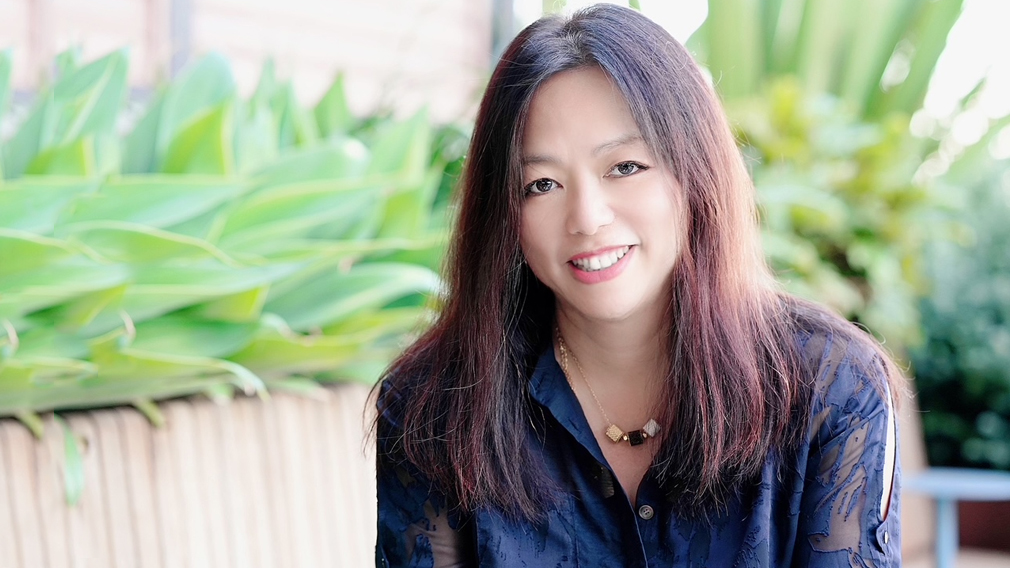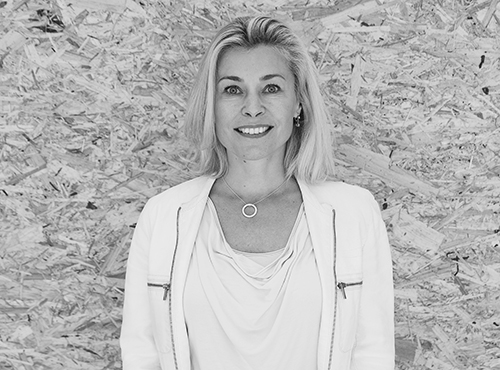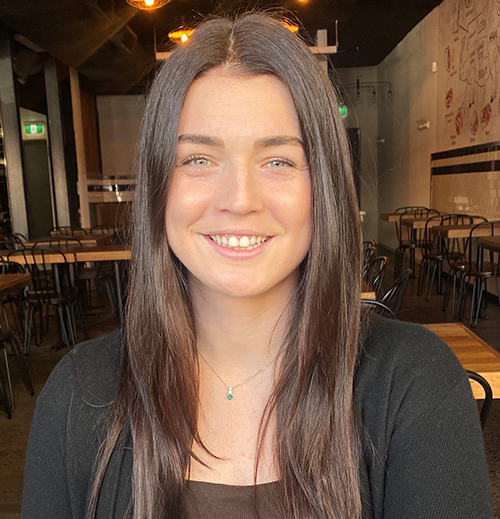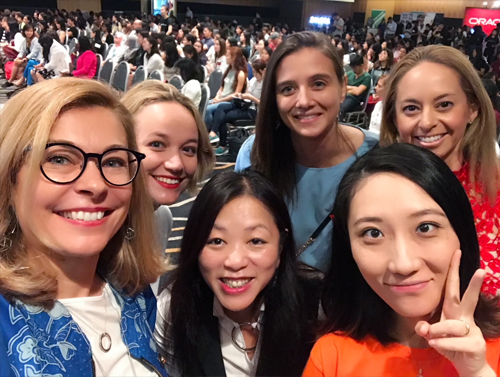No data background yet? No worries
Article by: Emma Foster | 02:00pm August 16 2021

Meggy Chung, Westpac’s general manager of data platforms, has a multi-pronged approach to addressing the data skills shortage. (Supplied)
If you’re already proficient when it comes to working with data, you’ll know your skills are in hot demand.
But even if you’re not, doors to data-related jobs are swinging wide open.
It’s a phenomenon spurred by companies the world over attempting to keep pace with the digitisation of everyday interactions, propelled into warp speed since the COVID-19 pandemic broke out.
“It’s a super exciting time, but it’s become a huge issue to find the right skill set,” says Jana Marlé-Zizková, chief executive and co-founder of the global data training community, She Loves Data.
“COVID has sped up in an extreme way not only how people consume, but how they communicate, search, interact – where digitalisation is playing an enormous role. Organisations are needing to adapt, not just their hiring processes but to support the constant upskilling of their people in working with data.”
It’s a challenge Meggy Chung knows well.
Since joining Westpac as general manager of the bank’s data platforms in February last year just as the pandemic began, Chung saw competition for talent heat up even more as skilled migration to Australia ground to a halt.
“Even when borders open, Australia will still have a skills shortage, more so than other parts of the world,” says Chung, who joined the bank from Singapore where she spent six years with Citibank, most recently leading its data services team.

In fact, research by Deloitte Access Economics and RMIT has found Australia needs 156,000 new technology workers in the five years to 2025 to ensure economic growth is not harmed. Globally, Korn Ferry has estimated the shortage of tech workers will represent $8.5 trillion in lost annual revenue in the decade to 2030.
Chung, who previously also worked in the UK at Barclays and Accenture, is taking a multi-pronged approach to tackle the challenge of augmenting her team to deliver on the bank’s growing pipeline of data-led projects, which she estimates will require up to 200 people over the next two years.
Besides throwing her hiring net wider to include talent in non-banking industries, she says her priorities are to rebalance her team so the majority of roles are held by permanent staff rather than vendors, build internal capability so those staff step into the more advanced data roles, and promote the idea that working in data doesn’t always mean you need a data degree.
“I have yet to speak to someone who can’t find a way into data,” she says.
“You can have an operational background, a risk background, work in reporting, analytics, marketing technology, or project delivery – they are all skills you can leverage. If people want to get into data, then chances are I will have a role somewhere.”
To help this mindset shift, Chung has spearheaded a set of initiatives, some aligned closely with her fervent commitment to getting more women into the male-dominated domain.
She’s set up “Data Gals”, an employee-led “tribe” to inspire more women across the bank to make a career shift; and partnered with global organisations with a similar mission, such as She Loves Data, a group Chung first partnered with in 2018 when at Citibank in Singapore.
New data education programs are also being rolled out for bank staff, including “tech talks” for general managers and a four-part series for interested members of the bank’s employee “clubs”, such as the 3000-plus members of under 35s professional development group The Youth Network, covering everything from how to use tools like Tableau to what the future holds for machine learning.
And to increase the bottom-up pipeline of highly sought advanced analytics skills, Chung is dialing up the bank’s focus on university graduates, adding a new data-specific stream to the bank’s existing graduate program, complementing other initiatives such as Westpac’s Young Technologist scholarship program.
“We want these graduates, not just because they come out with data skills, but because the younger generation sees data differently,” Chung says. “They intuitively know more about how and why data can be used by people and what the possibilities are.”
But, Microsoft digital advisor, Ashton Bridge, says it’s tough to interest younger people into data-centric careers – and convince them they can do the job.

“It’s all about painting a picture for what careers really look like, even if you haven’t obtained those hard technical skills, like coding,” says Bridge, who will be part of a data panel later this week for Westpac staff.
Bridge’s path to Microsoft is a case in point.
Having started her career as a laboratory assistant, working on autopsies in a hospital morgue, with aspirations to become a coroner, she says she shifted to tech after a project to overhaul the lab’s pathology IT system, and never looked back.
“I’m not a deep technical expert; I rely on people with that expertise,” Bridge says.
“My job is to bridge the gap between them and the business I’m advising to help solve their business problems. I found out I could apply my knowledge and experience into the tech world, and learn on the job, without following the traditional university path.”
Marlé-Zizková says organisations like She Loves Data play an important role in building potential candidates’ “competence, confidence and leadership” – across both soft skills (like project management) and hard skills (like coding and statistical modeling) – through a series of education workshops and webinars. Since founding the not-for-profit in Singapore in 2016, she says more than 14,000 women have taken part in training in 17 countries, including Australia.

The group also connects job-ready candidates with opportunities through “recruitment fairs”, virtual events where hiring managers showcase roles while candidates showcase their skills – a mechanism Chung says Westpac soon plans to adopt as part of its partnership with She Loves Data.
Chung says these initiatives go much deeper than simply recruiting talent for her data platforms area.
“We are on a mission to transform Westpac into a data driven organisation,” she says.
“And to do so, the whole of Westpac needs to become more data literate, so that people, for example, those in operational roles, can imagine and use data differently to improve their everyday work.”


Emma Foster is deputy editor of Westpac Wire. Prior to joining Westpac in 2013, she was a freelance writer, after spending almost 20 years in corporate affairs and investor relations, primarily in large financial services and consultancy firms, in Australia, UK, and Europe. She is also an aspiring photographer.
The Red Stroller and Signals at the Workplace

This article was originally published by Andrew Foster, CFA on LinkedIn on 13 April 2021. Republished here with permission.
—Andrew—
A couple of years ago, I interviewed someone for a role. Subsequently, they accepted, and we welcomed them into the bank. I am always curious as to why someone accepts a role. Asking “why did you decide to join us?” helps me refine my interview approach. After all, when you interview, you are selling a place to grow and develop, and when you observe, you are equally being observed.
The answer surprised me.
I saw the red stroller in the corner of your office and knew that family life would be considered here.
For context, at this time, I took my daughter to preschool each Monday before heading into work with the folded stroller. I am in no way claiming that this is anything close to an even burden of childcare and certainly wouldn’t have thought anyone noticed.
The experience got me thinking – what signals do we send in the workplace? How do we attract people to work with us, and how do we retain them?
—Garima—
“Every conversation is actually two conversations going on at once” – Nick Morgan, Power Cues.
The “second conversation” that Nick Morgan refers to is the one beyond the spoken word. It includes tone of voice, body language, and other signals that we send out to the listener. The unconscious conversation is far more challenging to influence.
The sign that I work in a great place came in the form of a photo.
Returning to work after a maternity break was a stressful event in my life. During my maternity, a lot changed, including the office location. Taking advantage of the move, my supervisor requested a nursing room (lactation room) complete with a refrigerator at the new site. Two weeks before my return, I received a photo of the new nursing room.
Looking back, I credit my return to full-time work to my manager’s act of kindness and thoughtfulness. I hope to pay it forward to other women and men at the workplace.
Self-awareness is a significant first step in sending out the right signs. If we can follow it up with authenticity, empathy, and consistency, it will help all of us realize our potential.
—Andrew—
My daughters are no longer in strollers, so now what? In a pandemic world, I drop them at school via car each day. In my diary, I have this blocked out as “drop off children at school”.
Perhaps that sounds obvious; however, I commonly hear from industry colleagues that they put dummy meetings in place when carrying out childcare commitments.
Look within your organization – if you are in a leadership role, what signals are you sending? What messages are others taking from your guidance?
As Garima said, are you being authentic and empathetic? After all, a happy, supported team is a productive team.
About the authors:
Garima Mamgain is Singapore-based marketing and strategy professional. She has worked with prominent consumer and business brands. Currently, she leads a critical marketing strategy initiative at a Fortune 500 company. Garima is passionate about driving diversity and inclusion. She volunteers with a non-profit – She Loves Data and is an active member of employee resource groups.
Andrew Foster is a Wall Street executive with a background in large-scale program delivery across London and New York. He specializes in building effective data teams in complex organizations that solve important business challenges. Andrew volunteers with the EDM Council’s Women in Data initiative and leads Affinity Group outreach.
This article was written in partnership with EDM Council Women in Data. Their mission is to provide support for and promote women in the field of data and assist in their development and promotion to more senior roles. Membership is open to all at EDM Council Women in Data and on Linked In





